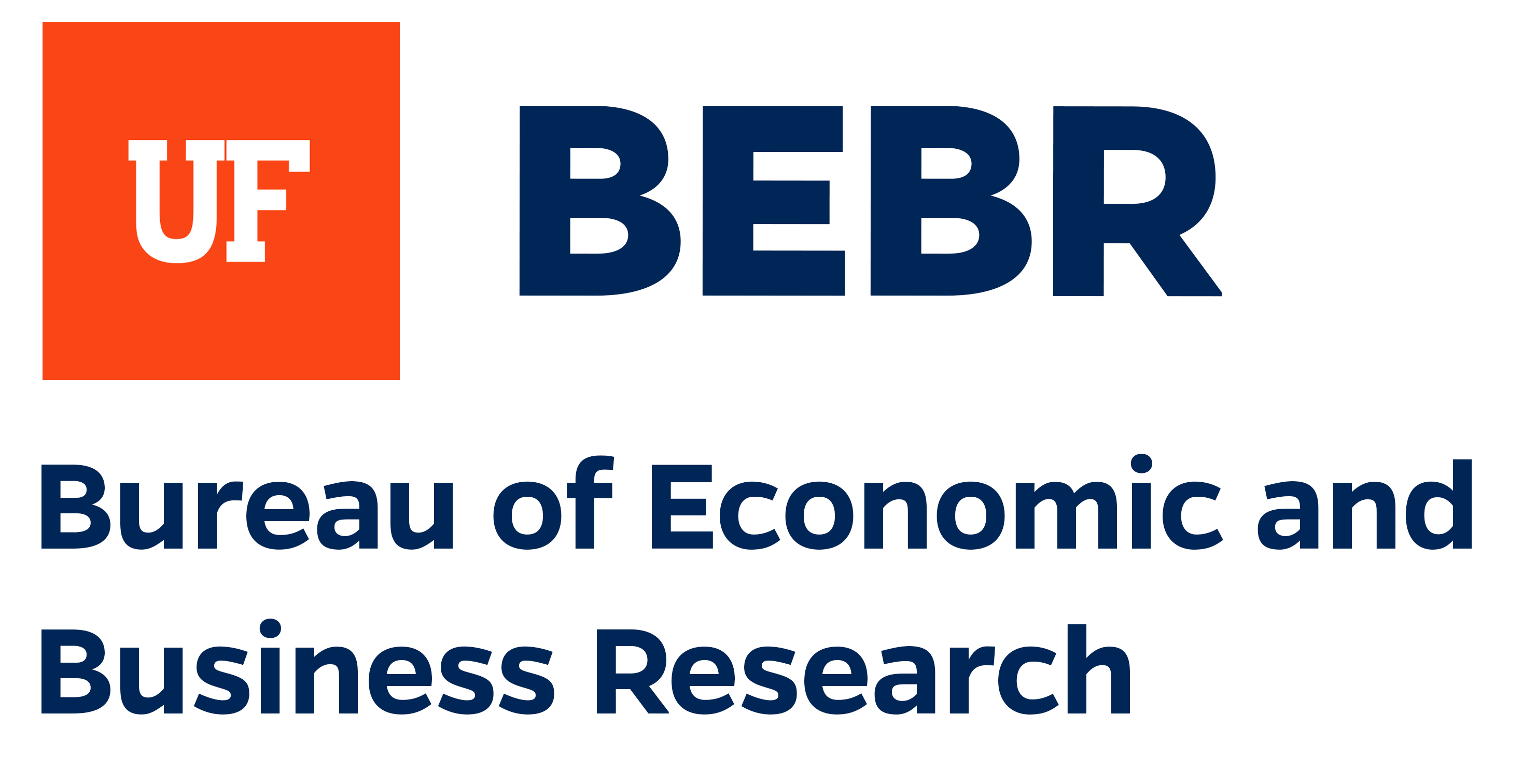ECONOMIC ANALYSIS
BEBR’s Economic Analysis department is a dependable source for accurate and impartial information concerning the national economy. Our team produces internationally recognized statistics on investments and industries, as well as reports detailing statewide and local statistics. Through rigorous data collection, we provide valuable insights using comprehensive analysis of economic factors impacting target research areas. This department’s objective is to assist with understanding the economy by offering up-to-date, relevant, and accurate data analysis services in an unbiased manner.
SOURCE DATA
BEBR’s core activities include the collection of source data, meticulous research and analysis, formulation and application of forecasting methodologies, and distribution of these statistics. The multifaceted approach that BEBR utilizes ensures accurate data collection and provides comprehensive insights, which in turn, contribute to informed decision-making across both public and private sectors.
Economic Statistics
BEBR’s economic statistics have historically provided real-time summaries of Florida’s fiscal landscape. BEBR’s growing library of economic statistics publications examine economic conditions based on theory, current observations, and data relationships linked by research conclusions. BEBR’s research teams integrate principles of econometric theory through utilization of both general statistics and mathematical statistics to advance econometric methodologies.
BEBR PROJECTS & REsearch
BEBR’s research projects and reports cover a wide range of initiatives, all of which started with collecting and analyzing source data. These efforts involve leveraging econometric theory, statistical methodologies, and mathematical statistics to scrutinize economic phenomena, both historical and contemporary. Through quantitative analysis of different facets of the economy, these projects contribute to a comprehensive view of the financial past, present, and future.
EXPLORING ECONOMIC DYNAMICS
Understanding economic intricacies involves analyzing the
4 fundamental parts of Economic Analysis
- Economic Impact Analysis – assesses repercussions of economic actions with insights into their consequences.
- Programmatic Cost Analysis – dissects expenditure patterns to reveal financial aspects of different programs, enhancing resource management.
- Cost-Benefit Analysis – evaluates gains and costs associated with projects, facilitating informed decision-making.
- Cost-Effectiveness Analysis – gauges the efficiency of fiscal interventions, in turn, offering improved navigation of the complexities of the economy with better precision.
ECONOMIC ANALYSIS RESEARCH REPORTS
The Net Impact of Retirees on Florida’s State and Local Budgets
Publication Type: Fiscal ImpactPages: 14Authors: Denslow, David; Schaub, RaySubject Index:Research Report, Retirees, Senior citizens, Taxable sales, Taxes, Florida dataDownload PDF
A Micro-Location Model of Public Investment in Pedestrian Safety Capital
Publication Type: Benefit-Cost, Public Policy, TransportationPages: 23Authors: Lenze, David G.Subject Index:Deaths, Pedestrian safety, Policy Studies, Public policy, TransportationDownload PDF
An Economic Analysis of Polk County’s Indigent Health Care Tax and Safety Net Program
Publication Type: Economic ImpactPages: 37Authors: Sandoval, Hector H.; Rowe, Steven; Walsh, Anita; Porter, Colleen K.Subject Index:Research Report, Health, County DataDownload PDF
The Net Impact of Retirees on Florida’s State and Local Budgets
Publication Type: Fiscal ImpactPages: 14Authors: Denslow, David; Schaub, RaySubject Index:Research Report, Retirees, Senior citizens, Taxable sales, Taxes, Florida dataDownload PDF
A Micro-Location Model of Public Investment in Pedestrian Safety Capital
Publication Type: Benefit-Cost, Public Policy, TransportationPages: 23Authors: Lenze, David G.Subject Index:Deaths, Pedestrian safety, Policy Studies, Public policy, TransportationDownload PDF



